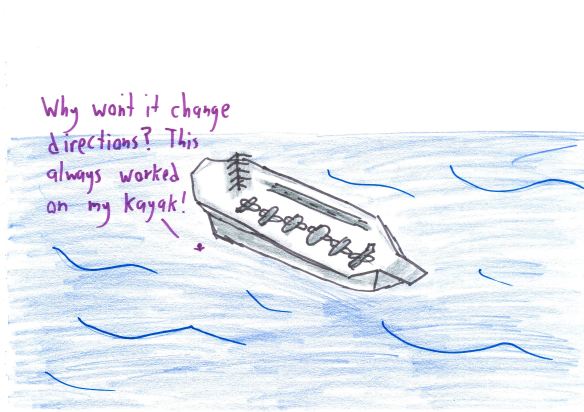Last September in Germany, between talks at the 4th Heidelberg Laureate Forum, I managed to catch a few minutes with Cornell professor John Hopcroft.
He’s a guy with bigger things on his mind.
“I’m at a stage in my life,” he says, “where I’d like to do something which makes the world better for a large number of people.”
Skimming Hopcroft’s C.V., you start to wonder: Um… hasn’t he done that already?

Born to a janitor and a bookkeeper, he grew up to become a foundational figure in computer science. Exhibit A: His textbooks on automata, algorithms, and discrete math have been adopted across the world. (His most recent one—on data science—is free online.) Exhibit B: He has a distinguished research record, highlighted in 1986 with a Turing Award— the closest thing to a Nobel for computer science. And finally, Exhibit C: During a decorated teaching career, he was twice named Cornell’s “most inspiring” professor.
With all this, you’ve got to figure he’s done at least a little good for a few people, right?
Well, Hopcroft has a larger number in mind: 1.3 billion.

Hopcroft has become an advisor to Li Keqiang, the Premier of China. He describes this as “the opportunity of a lifetime”: to transform Chinese education for the better.
“They have one quarter of the world’s talent,” Hopcroft says, “but their university educational system is really very poor.”
What makes Hopcroft—working-class Seattle-ite turned Ivy League professor—think he can leave his mark on a country as vast, distant, and internally diverse as China? Isn’t this like a swimmer trying to steer an aircraft carrier?

“A couple of things are going in my favor,” he says. First, he is apolitical. “I don’t have any special agenda to push in China,” Hopcroft explains. “I’m pushing education.”
The second is subtler, and carries echoes of Hopcroft’s engineering background.
“I understand the scale of the problem,” Hopcroft says.
It was Hopcroft’s wife who helped throw the magnitude of Chinese education into stark relief. Hopcroft had begun teaching at an elite program in China, instructing 30 students a year. “But my wife tells me, ‘That’s not going to have any impact on China.’
“China has one million faculty in universities, and 30 million students,” Hopcroft explains. “It’s a totally different scale.”
You can’t treat an aircraft carrier like a rowboat.

Recently, a fellow member on a committee proposed that they focus on funding small, elite programs. Hopcroft pushed back.
“I said, ‘Look, if they had a thousand of these, each with 100 students, that would be a hundred thousand students,” Hopcroft says. “What about the other thirty million?”

Rather than narrow his focus, Hopcroft hopes to nudge the entire system forward.
“The real leverage point,” Hopcroft explains, “is if the Premier writes 1500 university presidents and tells them it’s their job to improve undergraduate education. If 10% of them do, that will impact the lives of millions of people.”
In other words: to steer the boat, you need the ear of the captain.

And what do you tell that captain to do, exactly?
In three words: Change the incentives. “The metrics are wrong,” Hopcroft says.
Currently, universities measure their success in two primary ways: by research funding, and by number of papers published.
“If you’re a university president,” Hopcroft says, “you can tell people, ‘I raised the research funding from #15 up to #5,’ and they view it as impressive. But it has absolutely nothing to do with quality of education.”

Instead, Hopcroft proposes a new basis for evaluation. First, look at the content being taught. “Is the material in the course up to date?” he prompts. Second—and more ambiguously—look at the instructor.
“Does the faculty member show up?” Hopcroft asks. “Or do they send graduate students to show the PowerPoint slides? Does the person really know the material? Are they excited about it? Are they engaging these students?”
I butt in with a query: Doesn’t this come down to an aesthetic judgment? At least in part?
“The whole thing is,” Hopcroft agrees. He describes it as “kind of like scoring an ice-skater.”
That is to say: aesthetic, but not arbitrary.

“Could you evaluate a course if it was in Mandarin, and you didn’t speak Mandarin?” Hopcroft asks. Yes, it turns out: when Hopcroft sat in on the classes of two faculty members, his judgment matched with that of Mandarin-speaking evaluators. “Not only that,” Hopcroft says, “but I was able afterwards to give them advice as to how to improve their teaching.”
The measures may be subjective. But they’re detecting real qualities.
All this is outlined in the proposal Hopcroft has on the Premier’s desk.
“He understands what all the problems are,” Hopcroft says. “But they’re very hard to change because they’re driven by culture. I think that’s why [the Premier] likes me: I don’t tell him what’s wrong, I tell him how to try to fix it.”
Hopcroft has already helped advocate for the transition from a contract system to a tenure system for Chinese professors. Now, from among seven proposals, he’s focusing on teacher evaluation.
“We can’t evaluate a million faculty at once,” Hopcroft admits. “So I said, let’s take the top ten institutions, and in each one, pick five top disciplines, and in each of those, pick the three key courses.” That’s 150 teachers to evaluate in all.

“The university president is not going to know who we’re going to be evaluating, so he’s got to improve the whole system.”
Hopcroft knows there is danger in over-stepping. “[My proposal is] not saying how to improve education,” he says. “It’s telling 1500 university presidents, ‘It’s your job to improve it. You go figure it out.’”

In some sense, Hopcroft is fighting against the very quality that gives him such enormous access: centralized control.
The Premier has enormous influence on China, far more than any American politician has on policy. But now, Hopcroft wants him to deploy that power to encourage university presidents to stand on their own feet.
He wants the system to act less like a single aircraft carrier, and more like a fleet.

While American politicians fret about the economic and political threats that China may pose, Hopcroft sees the relationship differently.
“To me,” he says, “this notion that we should constrain China doesn’t make sense. We’re never going to be able to do that. We should be working with China and building the kind of relationship we have with Europe.”
It’s an awfully ambitious vision for a computer scientist living in upstate New York. But at this stage in his life, that’s exactly what Hopcroft wants.



China has just to copy the education system of Hongkong to be at the top of the top.